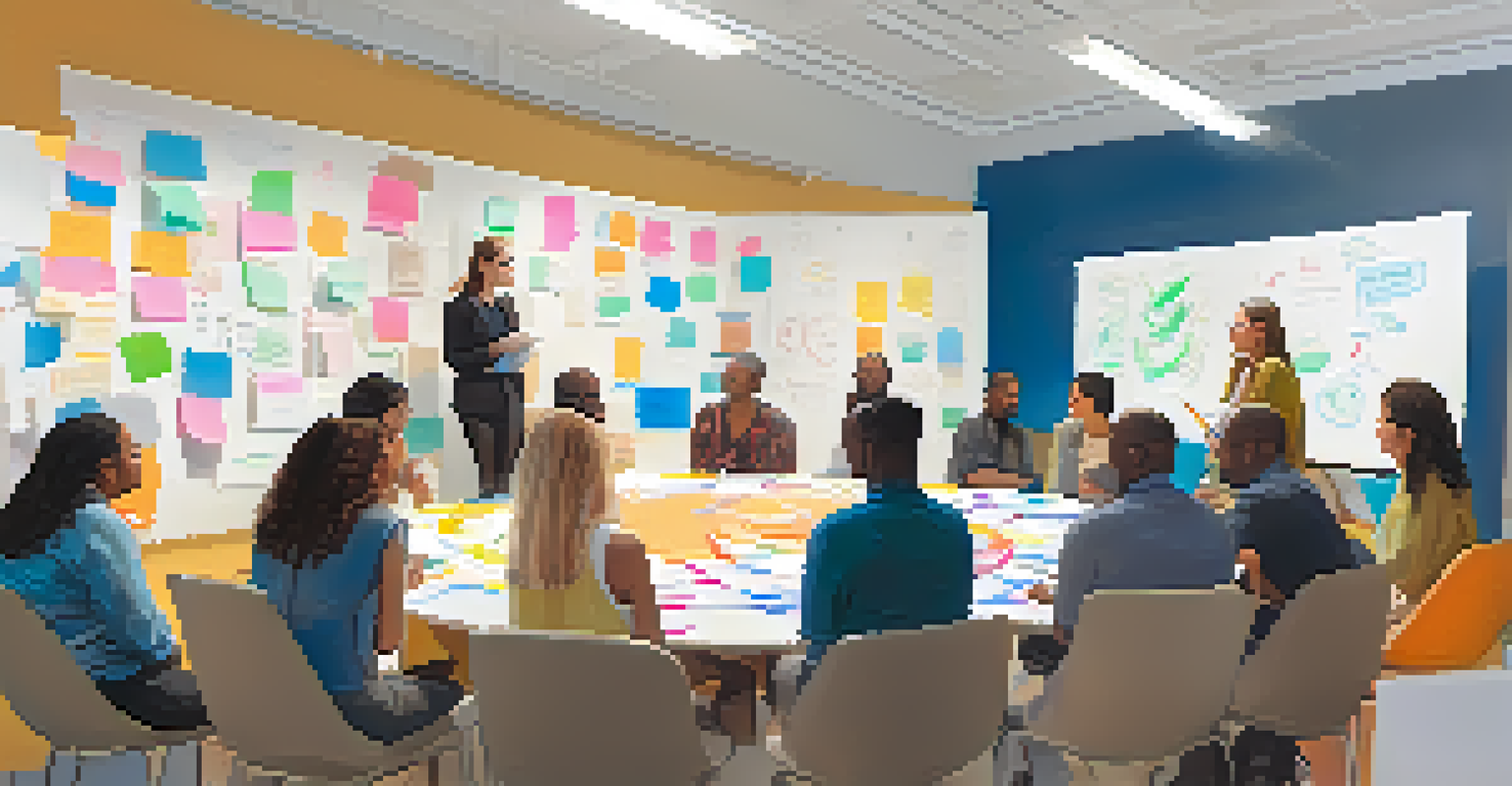Building a Mentoring Community: Engaging Stakeholders

Understanding the Importance of a Mentoring Community
A mentoring community serves as a vital support system, connecting individuals across various levels of experience. It creates an environment where knowledge and skills can be shared, fostering personal and professional growth. By bringing together mentors and mentees, these communities can spark innovation and collaboration that benefits everyone involved.
Mentoring is a brain to pick, an ear to listen, and a push in the right direction.
Imagine a garden where different plants thrive together; similarly, a mentoring community allows diverse perspectives to flourish. This diversity enriches the learning experience, providing a broader range of insights and solutions to common challenges. Ultimately, the goal is to cultivate a space where everyone feels valued and empowered to contribute.
As we delve into the process of building a mentoring community, it's essential to recognize the role of key stakeholders. Engaging these individuals effectively can significantly enhance the community's impact and sustainability.
Identifying Key Stakeholders in Your Community
The first step in building a mentoring community is identifying who your key stakeholders are. These might include potential mentors, mentees, organizational leaders, and even external partners who can provide resources or expertise. Understanding their motivations and how they can contribute will set a strong foundation for your community.

For example, mentors may be driven by a desire to give back or to develop their leadership skills, while mentees might be looking for guidance or new opportunities. By mapping out these motivations, you can tailor your approach to engage each group effectively. This ensures that everyone feels a sense of ownership and purpose within the community.
Build a Diverse Mentoring Community
A mentoring community connects individuals of various experience levels, promoting innovation and personal growth through shared knowledge.
Don't overlook the importance of external stakeholders, such as local businesses or educational institutions. Their support can provide additional resources, networking opportunities, and a broader reach for your mentoring initiatives.
Creating a Vision and Purpose for the Community
A clear vision and purpose are crucial for guiding your mentoring community’s efforts. This shared understanding helps to align all stakeholders toward common goals, making it easier to measure success. Start by brainstorming what you hope to achieve and how the community can benefit its members and the larger organization.
The greatest good you can do for another is not just to share your riches but to reveal to him his own.
Think of this vision as the North Star for your community; it should inspire and motivate everyone involved. For instance, if your goal is to foster innovation, your community might focus on pairing experienced professionals with newcomers to spark fresh ideas. Articulating this vision can help attract like-minded individuals who are eager to contribute.
Once the vision is established, communicate it regularly through various channels. Engaging storytelling can help keep stakeholders aligned and excited about the community's direction.
Establishing Effective Communication Channels
Communication is the lifeblood of any successful mentoring community. By establishing effective channels, you can ensure that information flows freely among all stakeholders. This might include regular meetings, newsletters, or a dedicated online platform where members can share insights and experiences.
Consider using tools that facilitate both formal and informal communication. For instance, a combination of scheduled video calls and casual chat groups can help foster relationships and encourage engagement. The goal is to create a space where members feel comfortable sharing their thoughts and asking questions.
Engage Key Stakeholders Effectively
Identifying and understanding the motivations of key stakeholders, including mentors and mentees, lays a strong foundation for community success.
Additionally, gathering feedback from community members can guide improvements in communication strategies. This way, you can adapt to their preferences and ensure that everyone stays connected and informed.
Fostering Engagement Through Activities and Events
To keep your mentoring community vibrant and engaged, you'll want to organize a variety of activities and events. These can range from workshops, networking sessions, to informal meetups that encourage interaction among members. Tailoring activities to the interests and needs of your community will enhance participation and enthusiasm.
For example, hosting a monthly lunch-and-learn can provide a relaxed environment for members to share knowledge while building connections. Alternatively, consider implementing a mentorship matching event that pairs experienced individuals with those seeking guidance, creating immediate opportunities for engagement.
Remember, the key is to strike a balance between structured events and informal opportunities for connection. This variety will ensure that all members feel included, regardless of their preferred style of interaction.
Measuring the Impact of Your Mentoring Community
To understand the effectiveness of your mentoring community, it's essential to measure its impact regularly. This can be done through surveys, interviews, and observing changes in member engagement and satisfaction. Establishing clear metrics from the start will help you track progress and make necessary adjustments.
For instance, you might assess how many mentorship pairs were formed, or how participants' skills have improved over time. Gathering qualitative feedback, such as personal stories of growth and success, can also provide valuable insights into the community's impact on individual members.
Sustain Growth Through Engagement
Ongoing effort and adaptation of strategies are essential for maintaining momentum and fostering participation in the mentoring community.
By continually evaluating the effectiveness of your initiatives, you can refine your approach and foster a thriving community that meets the evolving needs of its stakeholders.
Sustaining Momentum and Growth of the Community
Sustaining momentum in your mentoring community requires ongoing effort and commitment from all stakeholders. As the community evolves, it's important to adapt your strategies to keep members engaged and interested. Regularly revisiting your vision and goals will help ensure that everyone remains aligned and motivated.
Consider creating sub-committees or working groups that focus on specific aspects of the community, such as event planning or outreach. This not only distributes responsibility but also fosters leadership development among members. Encouraging active participation can lead to new ideas and initiatives that further enhance the community.

Remember, the journey of building a mentoring community is ongoing. Celebrate successes, learn from challenges, and always be open to feedback to keep the community thriving.